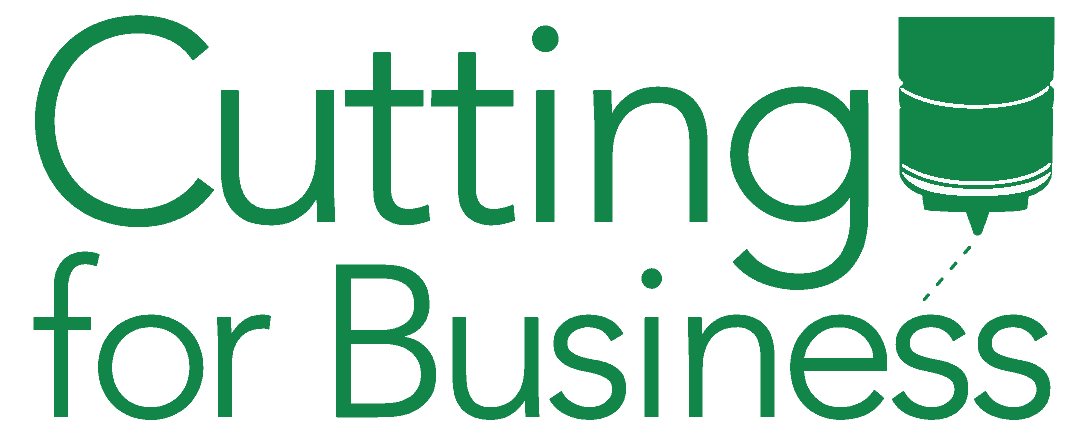Affiliate Disclosure: As an Amazon Associate I earn from qualifying purchases. Additionally, I may get commissions for purchases made through other affiliate links in this post.
Once you’ve started selling products and getting yourself established as a business, it’s a good time to start a website of your own. On Cutting for Business this week and some of next, we are going to take baby steps through starting your own website. To start, we need to know some basic web terminology – in easy to understand language – and a little bit about each term.
Beginner’s Web Lingo
Domain: This is the address of your website. It tells users where on the internet your website is located. For example, my domain name is cuttingforbusiness.com. Domain names are unique and registered for a period of time measured in years. You must keep up with your domain name registration, or it will expire and your website will be removed. You should expect to pay between $10 – $12 on average per year for your domain name. New website owners can usually register a domain for only a few dollars if they look for a coupon code online. Currently, .com websites are the most popular, but there have been a lot of new TLD’s (which stands for Top Level Domain, and is the ending to your domain name) offered lately. I recommend everyone gets a domain, and I’ve written about domains in depth in this post.
Registrar: This is where you register your domain name. Popular registrars include GoDaddy.com, Register.com, Namecheap.com, 1&1.com, and Name.com. Personally, I have used GoDaddy without issues for over a decade.
Hosting: Hosting is the monthly fee you pay for the space your website takes up on the internet. Hosting plans include disk space (the amount of space you are alotted), and bandwidth (the amount of traffic your website can handle each month). The more disk space and bandwidth your website needs, the higher the cost you will pay per month. Some registrars offer website hosting; while others do not. You can expect to pay around $12 to $15 per month for your hosting of a small ecommerce website. Personally, I like Hostgator.com for hosting, and have used them for many, many years.
Why? You may wonder why I choose to host my domains with GoDaddy and purchase my monthly hosting through Hostgator. Simple answer: It is cheaper for my needs. Be sure to price out your needs before you commit to something.
WYSIWYG: This awkward acronym stands for “What You See Is What You Get” editor, also referred to as a “drag and drop” editor. Providers of WYSIWYG website building services allow you to build a website yourself, with no technical knowledge, and hosting is usually included in your monthly fee. Popular WYSIWYG services include Wix.com or Weebly.com. Plans range from free to $30+ dollars per month.
Ecommerce Platform: These services allow you to build an online store that is managed through a dashboard. Your store operates on software the provider has built, and are generally fairly easy to navigate. Sites like Shopify.com and Storeenvy.com provide ecommerce platforms.
CMS – Content Management Systems: This is exactly what it sounds like. These are systems that help you manage the content of your website. The most widely known (and my favorite!) is WordPress.com.
HTML/XML/CSS/Javascript/PHP: These are various website programming languages that you may come across when starting your first website. The good thing is, you can run a website without knowing much about these languages. For now, just know that they exist.
Alright, everyone still here? We got a great start today on basic web lingo. You can refer back to this page throughout the week if you forget.
Here’s what to expect the rest of the week:
I’ll let you know my thoughts on WYSIWYG editors – and why I don’t want you to use one.
We will look at the pros and cons of ecommerce platforms.
We will explore WordPress.com as a way to build your first website.
Lastly, you can read my free 35 page guide on starting a website. Don’t worry, it’s beginner friendly and easy to follow.
Save this post to Pinterest so you can reference it later:

Since 2015, Christine Schinagl has been helping crafters start and run craft businesses through her blog, Cutting for Business. As a Silhouette and Cricut crafter herself, she has a unique take on what works and what doesn’t work in the craft business world. She also teaches a course on creating digital SVG designs, available at How to Design SVGs.
